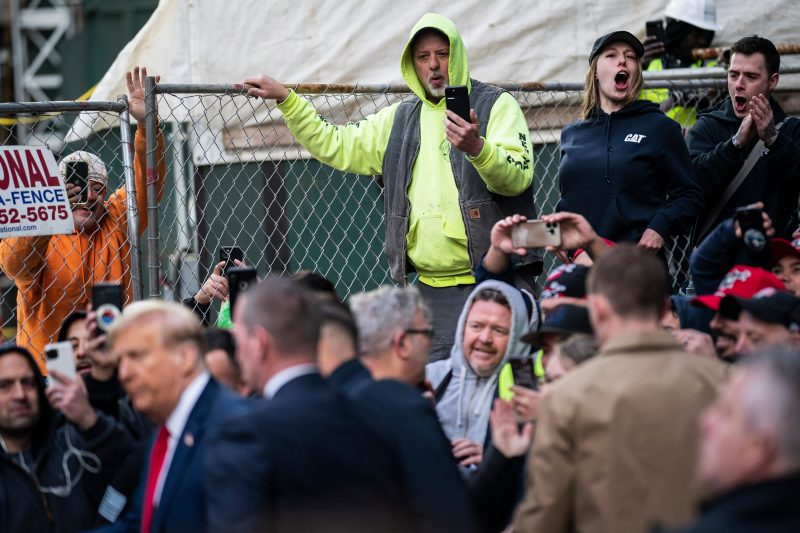In a political landscape marked by shifting alliances and unexpected outcomes, one group that has garnered significant attention and speculation are union members. President Donald Trump’s stance and policies towards unions have been a topic of discussion throughout his time in office, with divergent opinions emerging on how his approach may impact this demographic.
The relationship between union members and Trump has been complex, with both support and criticism arising from different quarters. Trump’s promise to bring back manufacturing jobs and revitalize the economy resonated with some union members who viewed him as a champion of American workers. His rhetoric on protecting American industries from foreign competition and renegotiating trade deals struck a chord with those who felt neglected by previous administrations.
However, Trump’s approach to issues such as healthcare, minimum wage, and workers’ rights has created friction with certain segments of the union movement. His administration’s efforts to roll back regulations, including those related to workplace safety and environmental protections, have raised concerns among unions representing workers in these industries. The push for right-to-work laws, which weaken unions’ bargaining power, has also fueled apprehension and resistance within the union community.
On one hand, Trump’s emphasis on job creation and economic growth has resonated with some union members who prioritize employment opportunities above all else. His promises to boost infrastructure spending and support the energy sector have been viewed favorably by unions representing construction and fossil fuel workers. These groups have found common ground with Trump on certain policy objectives and have been vocal in their support for his agenda.
On the other hand, Trump’s divisive rhetoric and controversial actions have alienated many union members who are wary of his divisive tactics and incendiary statements. His clashes with union leaders, such as the public spats with the AFL-CIO and other prominent labor organizations, have strained relations and fueled skepticism about his commitment to workers’ interests. The administration’s approach to immigration, healthcare, and social welfare programs has also drawn criticism from unions advocating for inclusive and equitable policies.
As the 2020 election approaches, union members remain a crucial demographic that politicians on both sides of the aisle are vying to court. Trump’s handling of labor issues will continue to play a significant role in shaping his relationship with this constituency and influencing their voting behavior. Whether Trump can solidify his support among union members or faces backlash due to his policies and rhetoric remains to be seen, highlighting the intricate dynamics at play within this diverse and influential group.
